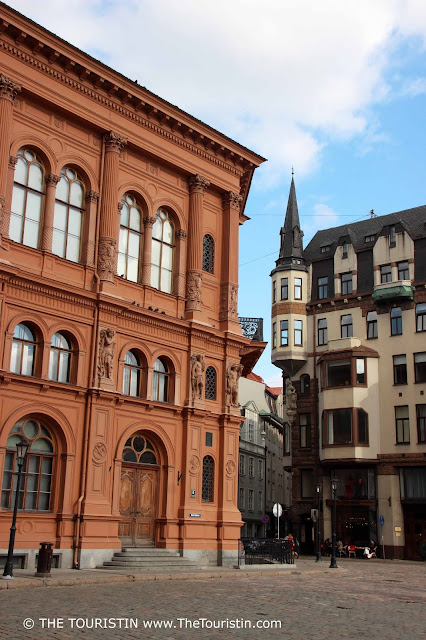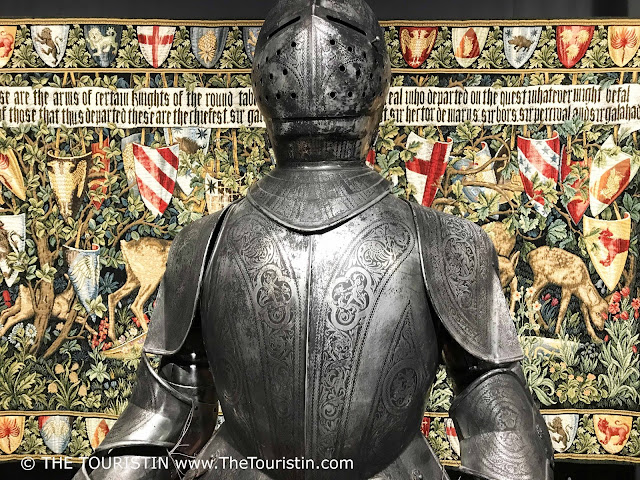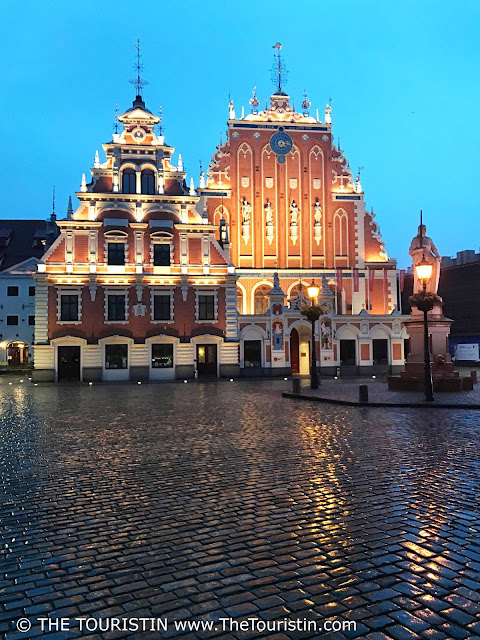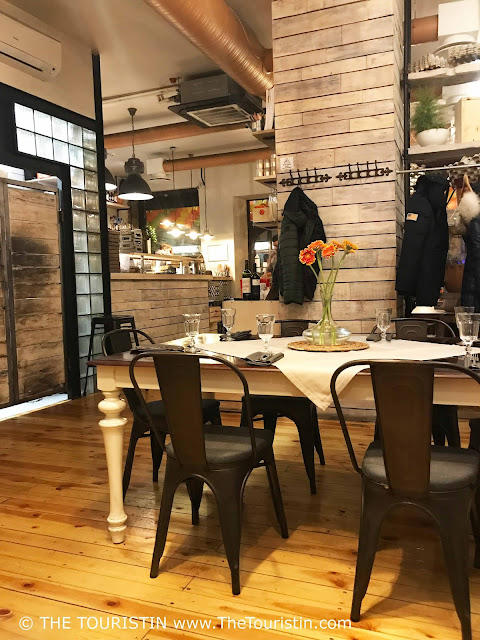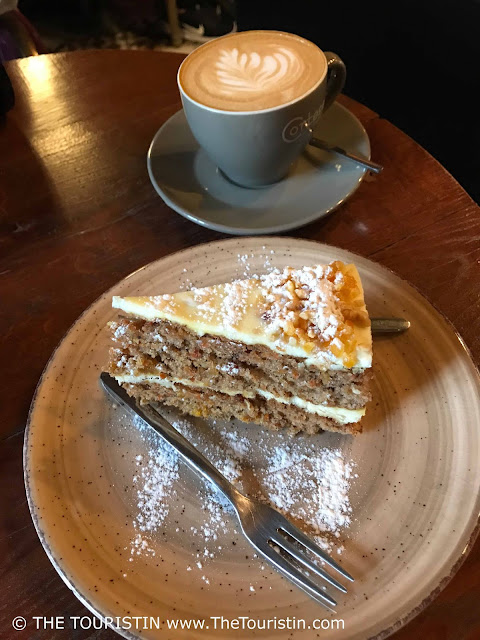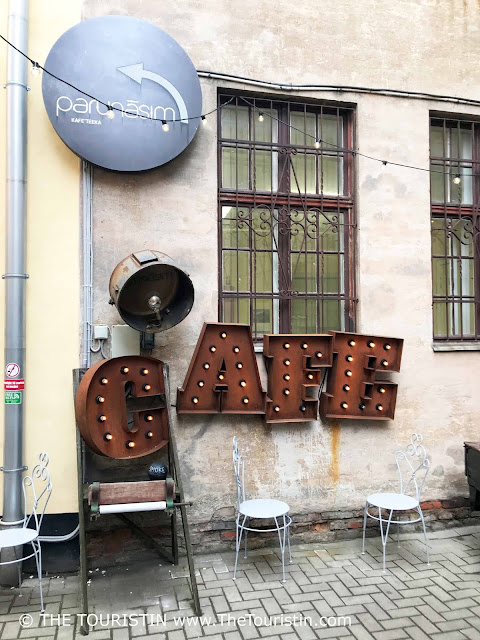Updated July 2023.
Together with Denmark,
Estonia, Finland, Germany, Lithuania, Poland, Russia, and Sweden, Latvia sits
along the Baltic Sea. And as Estonia and Lithuania, Latvia is
a Baltic State. Over the last 800 years and ever since a German
Bishop built a fortress in today's Riga in 1201, German knights, Swedish
nobles, and Soviet rulers, have all been in Latvia’s capital. In 1300 Riga
joined the Hanseatic League, and some of the architecture in town still
resembles that of the time. The UNESCO world heritage site sits directly in the
middle between eastern and northern Europe.
If you are a fan of history and art, as well as of modern architecture and design, this is the town for you. Riga is small enough, so that you can walk easily everywhere, and if you aren't up for that, there is a net of public transport. One moment you walk through medieval lanes and the next you stand in a futuristic edifice. Take the time to discover Vecrīga, the historical centre of Riga and Pārdaugava, the left bank of Riga.
What to expect from the Riga Guide for First Time Visitors?
I show you where you can look
at 52,000 pieces of art from Latvia and the Baltic region. I tell you who
founded Riga in 1201. You are going to hear about an influential and popular
guild who organized knight games, carnival balls and town festivals. I take you
to a place where crusading knights built a castle, hoping to convert pagans to
Christianity. You will find out where to walk down a staircase that has no problem
playing the main character in a period drama. I take you to a church named
after the greatest
Russian ever (that was the result of a Russia television poll). I show you a
glass mountain which is called Castle of Light. I take you around an island in
Riga, where fishermen, sailors, captains, ferrymen, and navigators lived. We
visit a farmer’s market that celebrates Europe’s diversity, and Latvia’s first
and only foodie hall. I highlight vegetarian friendly restaurants and cafés of
Riga, where I take you to a stylish green-house with a view over the rooftops
of town. You will also hear what language they speak in Riga, and what the best
time to travel to Riga is, and how to get to Riga and how to best get from the
airport to the centre of town.
Latvia won the Eurovision Song Contest in 2002, and the 2003 contest was held in the Latvian capital under the
slogan: Rendezvous in Riga. Riga is as picture perfect as it is quirky and
chic, and it is doubtless worth a rendezvous.
Travel Latvia. Riga Guide for first time visitors
Museum of the History of Riga and Navigation
Start your visit to Riga in
this place. The oldest public museum in Latvia opened its doors in 1773. The
museum is part of a 700 years old architectural monument. The Riga Dome
Cathedral ensemble is made up of a church, the gothic Cross Gallery, and this
museum. While you wander through the museum's 16 exhibition halls, packed to
the rafters with Latvian ornaments, armour, artefacts, literature, china,
cutlery, fashion, and jewellery you will learn all about the founding, and the
development Riga went through over the previous 800 years. Riga was founded in
1201 by the Bremen Bishop Albert von Buxthoeven, who built Riga on the model of
the German town Bremen. You can even see the town
musicians of Bremen in front of the nearby St Peter’s church.
In medieval times, Riga was a
tremendous seaport, and the largest city in the Swedish kingdom. In the 17th
century, the town was the most important port of the Russian Empire, and in the
18th- and 19th centuries it was the main trade centre in the Baltic region.
Riga became part of the Hanseatic League and sea faring plays a vital role in
Latvia. In the rooms dedicated to the sea, you learn about that history in
detail.
The 18th century column hall
in Classicism style is in the part of a former monastery.
Information: Museum of the History of Riga and Navigation, Palasta iela 4. Plan around three hours for a
visit. Hours Wednesday to Sunday 11am to 5pm. Tickets: School children EUR 1,
students, pensioners EUR 3, adults EUR 5.
Art Museum Riga Bourse
The museum, in the
exceptionally beautiful restored former stock exchange which was originally
built in 1852, houses the largest collection of art in the Baltic states. In
1920 a museum opened its doors in the former stock exchange. After WW2, Latvia
became part of the Soviet Union and a propaganda institution used the premises
until in the 1980s large parts were damaged in a fire. In the basement, there
is an exhibition that explains in detail how tiled floors, fireplaces, and
wallpapers were rescued and restored with the help of specialists. The result
is marvellous. Restoration works finished as recent as 2008.
The permanent exhibition is
made of six different collections: Greek and Roman art, the Western Gallery,
paintings from the 16th to 19th century, the Nicholas Roerich room, and the
Oriental Gallery.
On display are ancient Greek
and Roman art, mostly coins from Greece, Hellenistic kingdoms as well as the
Roman Republic and the Roman Empire (dated from the 6th century BC to the 4th
century AD). In addition, you can also look at ancient pottery, produced from
Greeks and Etruscans between the 15th to the 2nd century BC.
In the Western Gallery you can
browse the collection of 18th to 20th century Western European art. This part
of the museum has an unmistakable 19th century feel, remember, it was the time
the stock exchange was built. The parquet flooring, large mirrors and gilded
chandeliers make the already magnificent space of the Western Gallery seem even
more grandiose. Look at furniture and clocks with delicate marquetry, so
delicate, as if it was painted into the wood. You learn about the stories of
the Riga art collectors, who made their money at the stock exchange. If they
wouldn't have given their collected pieces of art to the city of Riga in a
charitable act of kindness, the Riga Bourse would probably not be what it is
today.
In the Venetian Hall and the
Makart Hall, where balls were danced, and banquets celebrated, today's visitors
are entertained by painters from the Netherlands, Belgium and Germany and their
art they created from the 16th to 19th century. Go on a journey through
history, from Renaissance and Mannerism, Baroque, Rococo and Neo Classicism,
all the way through to Impressionism and Art Nouveau.
The Renaissance was a time
when education, art, science, and literature became more and more important in
Europe. Medieval times and the way things were handled, were well and truly
over.
The painters in the 17th
century were inspired by new trading routes and the opening of the world
towards the Ottoman Empire, South America, and Asia. The world seemed richer,
and so were the paintings in times of Baroque.
During the Rococo and Neo Classicism
period, the painters work was heavily influenced by the age of reason and a
more philosophical view of the world, themes were also the French Revolution
and the times of poverty.
In the 19th century painters
and artists reacted to the Industrial revolution and all that came with it. It
was the time of art critics and art salons in Paris, and painters and artists
created their Impressionist- and Art Nouveau pieces as a counter-movement to
mass production.
The Silver Cabinet marks the
time when the Latvian state was being formed, and when some of the works of the
State Gold Fund found their home in the in 1920 newly opened State Museum of
Art.
A whole room is dedicated to
the paintings and graphic works by painter, writer, philosopher, and traveller
Nicholas Roerich (1874‒1947). These works, in striking and saturated colours,
were sent from India to the Latvian Roerich Society in the 1930s and are a true
part of the Latvia's cultural heritage.
The Oriental Gallery holds the
largest collection of art from the Far- and Middle East in Latvia and the
Baltic states. In one of the former safes of the stock exchange lives Latvia’s
only mummy, from Ancient Egypt, in a wood sarcophagus.
During the year, there are ever
changing temporary exhibitions. Please visit the website to learn more about
the program.
Information: Art Museum Riga Bourse. Doma laukums 6, Riga 1050, Latvia. Hours: Tuesday to Thursday 10am to
6pm. Friday 10am to 8pm. Saturday and Sunday 10am to 6pm. Monday Closed. Plan around
three hours for a visit. Tickets: Combined admission fee to all exhibition
halls, EUR 6 for adults, EUR 4 for students and children.
House of Blackheads
It is hard to believe but the
magnificent structure we see today is a rebuilt. The original House of
Blackheads, built in 1334 as a place for gatherings and festivities was bombed
by the Germans in World War Two, and what was left was demolished by the
Soviets soon after. On the facade of the building people could read “Should I
ever crumble to dust, rebuild my walls you must”. Latvians obeyed that wish and
the building works of the current one finished only a few years after
independence in 1999. The result is magnificent, the building is once more fit
for a fairy-tale.
The Brotherhood of the
Blackheads, an association of foreigners (mostly Germans), and unmarried
merchants, ship's owners and captains who weren’t eligible to join the great
guild, became the main tenant of the building in the 17th century. There were
even honorary members, like Russian emperors and Swedish kings. Saint Mauritius,
a legion leader, who was tortured to death, and is the patron saint of the
guild, adorns the coat of arms.
When the building was bombed
into destruction by Germany in World War Two, the original floor plan survived.
Later a square was paved in its place. When plans for rebuilding of the
Blackheads house became reality, the old floor plan was recovered. Walk through
the cellar and listen to stories about the Blackheads guild and learn about the
role they played in society. They held celebrations and gatherings, a few
hundred men strong, in this cellar. Over the years they became influential,
they were popular with locals for organising knight games, carnival balls, town
festivals and donations to the church.
The Celebration hall has been
restored with the help of pre-World War Two photographs. The ceiling adorns a
replica of the painting of the 1900 ‘Apotheosis of Saint Mauritius,’ and on one
of the walls is the impressive coat of arms of the Brotherhood of Blackheads. A
collection of paintings with portraits of Swedish and Russian monarchs, all
framed in elaborate wooden masterpieces, were destroyed in a fire in 1941. The
celebration hall is decorated with some reproductions of these. There is also a
portrait gallery with paintings of for Riga important people, like Stephen
Bathory, the than King of Poland, and Charles V, the than Emperor of the Holy
Roman Empire.
The Luebeck hall, named after
the Hanseatic town in the northern part of Germany, has a fireplace
decorated with tiles that tell about the eight hundred years of Riga history.
It was created based on 19th century tile samples. Visitors can look at two
paintings, one of Gustav II Adolf, the than King of Sweden, in a battle and a
panorama of Luebeck.
In the extravagantly decorated
cabinet room on the first floor, there are heavy wooden tables, gilded
chandeliers, a collection of tobacco pouches, armours, 18th-century Moorish
sculptures, fireplaces, 19th century furniture, paintings, and the collection
of silver of the Blackhead House.
Information: House of Blackheads, Ratslaukums 7, Riga 1050, Latvia. Old Town. Hours: Tuesday to
Sunday 11am to 6pm. Closed Monday. Tickets: EUR 6 adults. EUR 3 students and
children. Plan around two hours for a visit.
Latvian National Museum of Art
52,000 pieces of art from
Latvia and the Baltic region are on display in this newly renovated museum with
its Baroque style facade. It was originally purpose built by Baltic German
architect Neumann, who was the director of the museum at the time, in 1905 as a
museum. In recent years the museum has been modernized, existing and the so far
unused spaces were remodeled, and additional space was created in the basement
with respecting and preserving all little historical and decorative details. In
the attic there is a whitewashed wooden structure and skylights in the floor
that allow visitors views of the floor below.
The main staircase can easily play the main character in a period drama. Dive into stories told
through 19th and 20th Century art. It is an engaging and emotional journey
through society, national affairs, and historical events in Latvia and Riga.
When you look at pieces the artists made, while they lived under Russian
occupation, with a communist regime, it is especially gripping. The art is
powerful.
Another staircase that
connects the entrance hall on the ground floor with the newly built basement
has got the Midas touch and is also worth a visit alone. In the basement you
find lockers, the cloak room and the bathrooms, together with a café.
While you enter the museum
from the main road, there is a large square at the back of the building, next
to the local park, the Esplanade Park, and the Art Academy of Latvia.
Information: Latvian National Museum of Art. 1 Janis Rozentals Square, Riga 1010, Latvia. Hours: Tuesday to
Thursday 10am to 6pm. Friday 10am to 8pm. Saturday and Sunday 10am to 5pm.
Closed Monday. Tickets (combined ticket for great exhibition hall and permanent
exhibition): EUR 6 adults. EUR 3 students and children. Plan around three to
four hours for a visit.
Konventhof Riga
The Konventhof is right in the
heart of Old Town of Riga, and due to the layout of its medieval buildings it
feels almost like a village within the town. In the 13th century, the
Brothers of the Sword, crusading knights, built a castle in this place, to
protect the church and to convert pagans to Christianity. Remember during these
times, they (brutally) forced people to become Christians. Oddly, that it is
most often ignored these days. It was later given to the Convent of the Saint
Spirit and turned into a shelter and warehouses. As we know, over the centuries
there were fights, wars, and fires, and the Konvent (that is the German word
for convent) was rebuilt over and over. In the 1980s, during the Soviet
occupation, the structures of the Konvent resembled ruins. Only after
independence did Riga, with the help of building experts rebuild the nine
buildings of the Konventhof. Browse through shops and stop for a drink at one
of the cafés.
Information: Konventhof,
Kalēju iela 9/11, Riga, Latvia.
St Peter’s Church Riga
St. Peter’s Church with the
tallest spire of Riga, built in 1209, is one of the oldest medieval structures
of the Baltic States. The wooden spire was bombed and destroyed by Germans in
World War Two and rebuilt three decades later in 1973. You will love the
fantastic view from its tower over the colourful houses of the old town and the
river. Take the lift to go up there, it runs every ten minutes.
Information: St. Peter's
Church Skarnu iela 19, Riga 1050, Latvia. Hours: September to April: Tuesday to
Saturday 10am to 6pm, ticket office from 10am to 5pm. Sundays 12pm to 6pm,
ticket office from 10am to 5pm. May to August: Tuesday to Saturday 10am to 7pm,
ticket office from 10am to 6pm. Sundays 12pm to 7pm, ticket office from 10am to
6pm. Tickets to the tower: EUR 9 Adults, children up to the age of seven: free,
bring an identity card as a student and get the ticket for EUR 7.
Alexander Nevsky Orthodox Church in central Riga
This painted yellow, wooden
building in classicist-style welcomes visitors ever since 1825 and is an
architectural monument. The dome of the church sits on a wooden pillar
construction. You enter the building, named after prince Alexander Nevsky who
was canonized in 1547, on the left side. There are a few other church buildings
dedicated to him. Mr Nevsky became a legend for his soldierly success over
German and Swedish invaders.
Information Alexander Nevsky Orthodox Church, Brīvības iela 56, Centra rajons, Rīga, LV-1011,
Latvia.
Nativity of Christ Cathedral in Esplanade Park
Building works of this
cathedral with its five domes finished in 1884, and works were supported by
Emperor Alexander II who donated the bell tower and its bells. This church was
a science centre and planetarium plus café during the Soviet occupation, they cut
off all the crosses (how dramatic). Soon after Latvia gained independence from
Russia, the cathedral was reopened as a place of worship, and the iconostasis
was consecrated in the spring of 2000. On entering it feels as if one is
bathing in gold. I asked a nun whether I can take one photo; I smiled brightly
at her and gestured that I am a writer, and she agreed, lifting a finger, that
I'm only allowed to take one (there were also lots of TV cameras). I saw her again later, while she was on her
mobile phone. I bet she was having a friendly chat with one of the saints?
(It is the 21st century).
Information: Nativity of Christ Cathedral
in Esplanade Park, Brivibas bulvaris 23 | Centra rajons, Riga 1050, Latvia. Tickets:
Free. No photos. Allow thirty minutes for a visit. Women must cover their hair
(it is what it is, I personally can’t see the point), men are allowed to show
their hair.
Riga Left Bank - Explore Pārdaugava
Pārdaugava is the area on the left
bank of Daugava River. The name means 'over Daugava'.
National Library of Latvia – The Castle of Light
Float through this book
heaven. The National Library of Latvia collection holds four million pieces. The
emphasis lies on social science and the humanities, to support higher
education, research and life-long learning. Readers also have the chance to
browse through special collections – rare books, manuscripts, the Latvian- and
Baltic Central Library collections, maps, sheet music, sound recordings,
graphic publications, ephemera and periodicals.
Ever since the National
Library of Latvia was founded in 1919, it relocated between several buildings.
It eventually found its home in the purpose-built structure on the banks of the
River Daugava in 2014. The building that resembles a glass mountain was
designed by Latvian born architect Gunnar Birkerts, who studied architecture in
Germany, and lived in the US. Reading rooms in the structure make use of the
natural light, which gives the library the name "Castle of Light."
The “People's Bookshelf” in
the atrium of the National Library of Latvia is certainly one of the highlights
in the building. The bookshelf is as high as a five-storey house and holds
books that were donated to the National Library of Latvia. Every visitor (that
also includes you), can donate a book to "A Special Book for a Special
Bookshelf".
Donors are asked to bring a book and write a personal message on the first page of the book that explains why the book is of importance to the donor. It is a project that aims to unify people through books and personal stories. In the end there are going to be 15,000 books and stories in the: People's Bookshelf.
Donors are asked to bring a book and write a personal message on the first page of the book that explains why the book is of importance to the donor. It is a project that aims to unify people through books and personal stories. In the end there are going to be 15,000 books and stories in the: People's Bookshelf.
Information: National Library of Riga. Mūkusalas iela 3,
Zemgales priekšpilsēta, Rīga, LV-1423, Latvia. All the library's levels are accessible for persons with disabilities. Hours: Monday to Friday 9am to 8pm. Saturday and Sunday 10am to 5pm.
Bistro, Cafe and Restaurant -KLĪVERSALA-.
Farmer’s Market in the Kalnciema Quarter
At this Saturday farmers
market, you can check out local products, and best of all taste whatever is in
season at the time of your visit. Speak to the farmers and designers and buy
locally made craft and trinkets. It is a beautiful neighbourhood atmosphere.
The market is also a place to celebrate Europe's diversity, with themed market
days like for example, "refined Italian," "gorgeous
Spanish," "magnificent Eastern".
Also take the time to go for a
walk through this Riga borough and look at wooden houses, some are already
beautifully restored whereas others look like ruins.
Information: Kalnciema Quarter, Kalnciema iela 35, Riga, Latvia, LV-1046. Public transport from Riga centre: public buses No:
22, 32, 35, 43, 53, and minibus 270 (from 13. janvāra iela). Hours: The farmer’s-
and artisan market is on every Saturday between 10am and 4pm. Tickets: Free.
Kipsala - an island in the Daugava River
Kipsala is an island in the
Daugava River, directly off the Vansu bridge (only a short twenty-minute walk
from the centre of Riga). The island, roughly 2.5-kilometre-long and 500 metres
wide. Towards the end of the 17th century, fishermen lived on the island; it
was convenient since they fished in this area. The houses had ice storage
facilities for fish and locals also built fish smokehouses in their yards. Over
time a dam was built, the flow of the river changed, and sand dunes
disappeared. There were floodings and fires. The river and water always played
the biggest role for locals, and it remained the home of fishermen, sailors,
captains, ferrymen, and navigators. Streets were named accordingly. A ferry
service transported commuters from the centre of Riga to the island, and the
street "Balasta dambis" was used as a wharf where goods were unloaded.
Steamboats and factories were
built. The island lost a bit of its appeal in the 1920s and 1930s, until a
bridge was built in the 1980s after the Riga Technical University was built on
the island. Today, there is the Uni, a large shopping centre, and an exhibition
centre, and the Žanis Lipke memorial at 9 Mazais Balasta dambis, where Lipke, a
Latvian dock worker hid Jews during World War Two before they could be deported
and murdered. Factories are turned into modern housing, and there are
refurbished traditional fishermen cottages next to Baroque- and Art
Nouveau-style residential houses.
Kipsala is part of the UNESCO
World Cultural and Natural Heritage site. Walk all along the Balasta Dambis to
admire wonderfully restored wooden houses. Turn left into Enkura iela and walk
all the way towards the end of the street to reach the other end of the island.
Turn back, and later right into Zvejnieku iela, till you can turn left into
Mazu Kaiju iela. Walk straight onto Kaiju iela and later walk along Oglu iela,
before you head back Balasta Dambis.
Information: Kipsala. Left bank
of the Daugava River. Walk over Vansu bridge or take the bus 57 from the
centre. Allow two to three hours for a visit to Kipsala.
Holy Trinity Orthodox Church in Āgenskalns
Āgenskalns has forever been
the home of sailors and fishermen and trades people, there were orphanages and
women's shelters, and hospitals, a market hall, and later parks and gardens
were created where locals spend their leisure time. Most houses in this borough
we see today are from the 19th and 20th century with many examples of wooden
architecture, as well as beautifully decorated Art Nouveau facades. Parts of
the borough run along the Daugava River.
This Eastern Orthodox Church built
in 1895. There used to be a tiny church here before, that was only used during
the summer months. The Holy Trinity Orthodox Church has striking cross domes,
showcasing Moscow's 17th century architectural features and is painted in light
pink, light purple, light bluish and gold. When you walk in you enter first the
anteroom, and then the church with its symmetrical layout. Twelve windows with decorative
finishes illuminate the church, and walls are adorned with ornamental bands.
From the church cupola, the images of the evangelists and apostles look down on
worshippers. There are several screens bearing icons where visitors can light
candles and pray; they separate the main room from the back of the church.
There is gold as well as a lot of pink. One can't help but to be in awe of such
beauty.
This is just such a wonderful
building, like straight from a fairy-tale. I didn’t feel welcomed and was even
pushed away by a local when I lit a candle in the church. I wonder how the
church (in general) wants to reach people, if they act this hostile towards
strangers. If you visit, please be quiet. It is always sad to experience that
locals can’t believe that strangers are genuinely interested in their lives.
Information: Holy Trinity
Orthodox Church, Meža iela 2, Zemgales priekšpilsēta, Rīga, LV-1048, Latvia.
Vegetarian Friendly Restaurants and Cafés in Riga
Centralais Gastro Tirgus
The is the first food market in the whole of Latvia, and it is definetely the place to be for any travelling foodie, and of course for everyone who likes a good night out.
Information: Centralais Gastro
Tirgus, Riga Central Market. Centrāltirgus iela 3 k.2, Latgales priekšpilsēta,
Rīga, LV-1050, Latvia. Sunday to Thursday 11am to 10pm, Friday to Saturday 11am
to 2am. Expect to pay EUR 20 to 40 per Person, inclusive water and wine.
Café Herbārijs
Stunning space. Dine in a giant green-house, and feast on black salsify, beetroot, and rutabaga. The coffee is great too.
Information: Café Herbārijs.
Dzirnavu iela 67, Centra rajons, Rīga, LV-1011, Latvia. Hours: Sunday to
Wednesday 11am to 10pm, Thursday and Saturday 11am to 12am, Friday 11am to 1am.
Book in advance. Expect to pay EUR 40 to 50 per Person inclusive wine.
Cepiens
Hangout for locals of Āgenskalns. I recommend the risotto, and also to order a hot chocolate.
Information: Cepiens. Meža iela
4A, Zemgales priekšpilsēta, Rīga, LV-1048, Latvia. Hours: Monday to Thursday
8am to 10pm. Friday 8am to 11pm. Saturday 9am to 11pm. Sunday 11am to 10pm. Expect
to pay EUR 25 to 40 per Person.
Klīversala at the Castle of Light
I recommend the sweet potato filled with cheese and spinach, followed by a piece of cake as dessert.
Inforation: Klīversala at the
Castle of Light. Mūkusalas iela 3, Rīga (Latvian National Library, ground
floor). Hours 10am to 4pm.
Parunāsim kafe'teeka
They call it the most romantic café in Riga, and it is pretty special, and so is the carrot cake.
Information: Parunāsim kafe'teeka. Mazā Pils iela 4, Centra rajons, Rīga, LV-1050, Latvia.
SENĀ KLĒTS: Buy locally handmade souvenirs in Riga
At SENĀ KLĒTS, the National
Costume Center, you can learn about Latvian ethnography. There are more than 60
Latvian traditional costumes from different regions of Latvia on display.
Handicrafts are handmade locally from linen, wool, and fine embroidery, colourful
fabrics, and jewellery. This is the place to buy a souvenir from Latvia that
will certainly bring back memories of your visit to Riga every time you look at
it or wear it. This shop is a true treasure chest for lovers of ethno-fashion. This scarf won't go out of fashion, and it is so precious.
Information: SENĀ KLĒTS. Tautas
tērpu centrs SENĀ KLĒTS, Rātslaukums 1, Rīga, LV-1050, Latvija. Hours: Saturday
and Sunday 11am to 6pm. Monday to Friday 10am to 7pm.
What you need to know to travel to Latvia
How to get to Riga
You can hop on a non-stop
flight form most major capital cities to Riga International Airport. Visit the website of the airport in Riga, to see which airlines fly to Riga.
Visa for Riga
Latvia is a member of the
European Union. Europeans are free to enter. If they want to stay longer as
three months, they need to inform the immigration department. If one travels
within the Schengen area, there are obviously no border controls. Visa-free tourists may stay in Latvia for up to 90 days within a period
of 180 days: United States, Canada, Australia, Israel, Japan, Korea, Hong Kong,
Brazil. Citizens of Russia, Belarus, Ukraine, Georgia, Armenia, Azerbaijan,
Kazakhstan, Uzbekistan, and China require a visa to travel to Latvia. For
detailed info please visit Schengen Visa Info.
How to get to town from Riga airport
Jump into a taxi just in front
of the airport terminal. The single fare is plus/minus EUR 13 to EUR 15, for
the 10 to 20-minute ride. To be on the safe side, check that the taximeter is
on, before you start the journey towards town. Use a red-cab, they are a
reliable company. A taxi driver at the airport asked me to pay EUR 44 to the
centre of town, I happily refused. You can also take the bus into town, the
fare is EUR 2; it is a rather tiny bus, depending on the luggage you carry,
this might not be the best option.
Wi-fi in Riga
Riga is one of the European capitals of free Wi-fi, every public place has free Wi-Fi. You can get free Wi-fi literally and almost
everywhere, in parks, shopping centres, restaurants, cafés etc. Browse this website to find free hotspots.
How to change money in Riga
You can pay almost everywhere
with a credit card, and there are also lots of ATM’s in the centre of town. Citizens
of EU member states wouldn’t need to change any money, since the currency in
Latvia is the EURO.
Best time to travel to Riga
Riga is a year-round destination. You can expect
sunny days from May to October, with an average temperature of not higher than
21 degrees Celsius in August. Keep in mind it is a town by the Baltic sea,
where the weather changes fast. Winters are icy cold with lots of snow, that sort
of weather can last well into March and even April (bring warm clothes, as in
beanie, gloves, puffer jacket (cruelty-free) or woollen coat, winter boots).
What language do they speak in Riga?
The official language in Latvia is Latvian. Over a
quarter of the population also speaks Russian. The government pushes for
Latvian taught at schools only in the future. It is conceived that integration
and language go hand in hand, and that it results in a sense of identity.
Russian immigrants on the other hand fear for their children to lose their
heritage. One of the issues apparently is that there aren’t enough Latvian
teachers.
From Berlin with love







